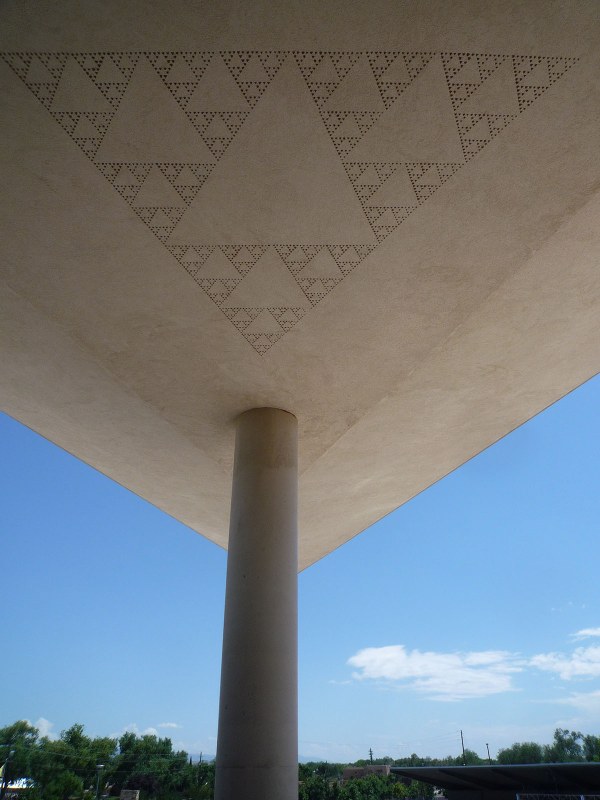Miguel Arzabe, Sierpinski Gasket
On view in the Amphitheater
Miguel Arzabe
born 1975 Saint Louis, Missouri; lives Oakland, California
Sierpinski Gasket
2009
stenciled local earth on wall and ceiling
Installation made possible by the Richard Levy Gallery, Albuquerque
For this site-specific installation, Miguel Arzabe incorporates math, placemaking, and art by creating a set of repeated patterns directly on the exterior underside of the Museum’s roof overhang. Arzabe chose to construct his image with local mud, applied with a trowel using a hand-cut stencil. Local weather conditions—wind and rain—will determine the life span of the installation.
Polish mathematician Wacław Sierpinski first described the “Sierpinski Gasket” in 1915. Sierpinski’s Gasket (or triangle as it is sometimes called) is a fractal, a pattern that repeats its shape and appears the same at any scale. To create a Sierpinski triangle, an equilateral triangle is divided into four congruent equilateral triangles and the center triangle is then removed; this process is repeated infinitely for each of the remaining small triangles. Though the pattern is named for Sierpinski, it appeared centuries earlier in the floor decorations in Medieval Rome.

